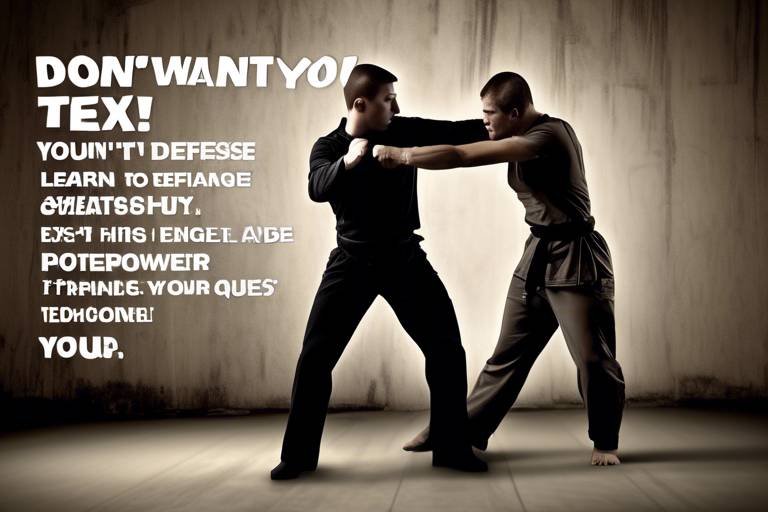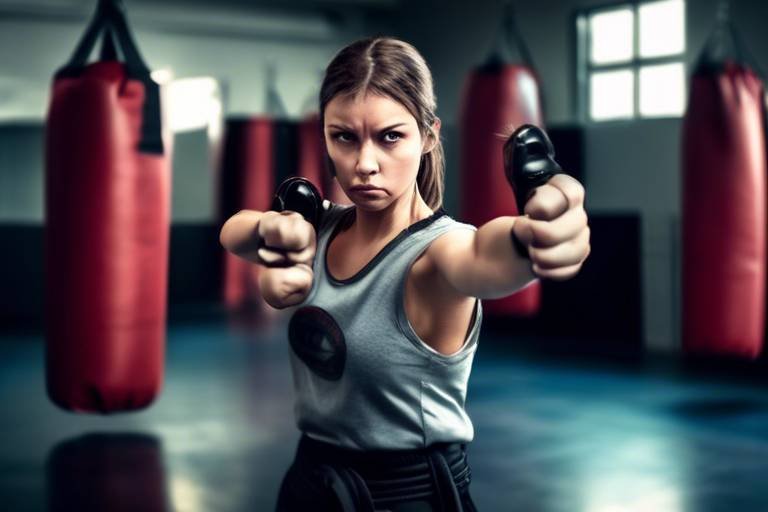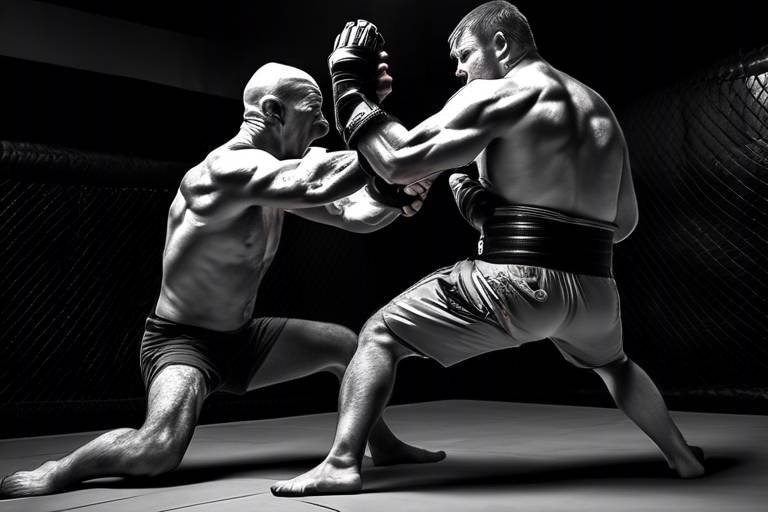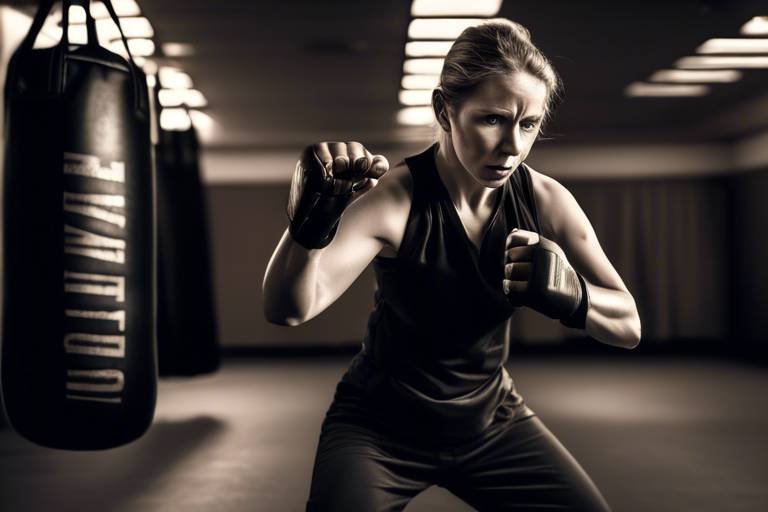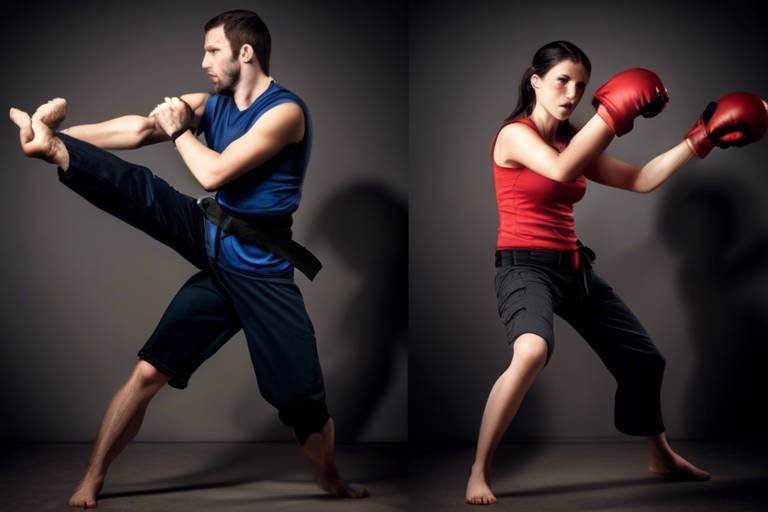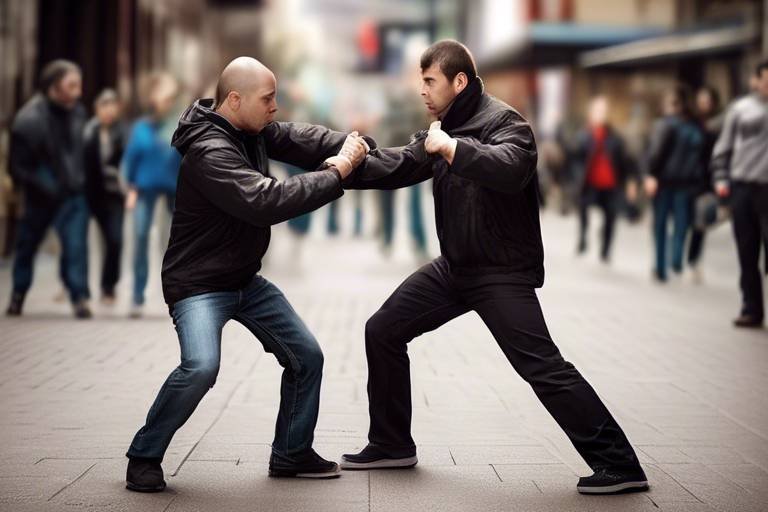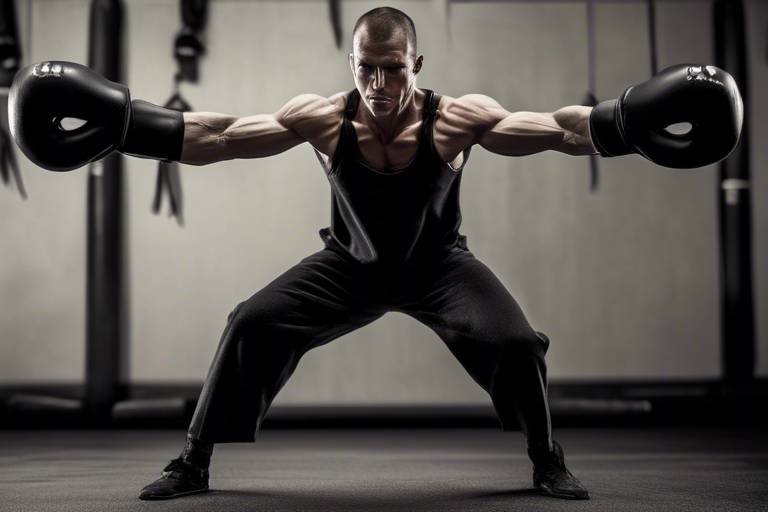Debunking the Myths around Use of Power in Self-Defense Techniques
In a world where personal safety is a growing concern, understanding self-defense is more important than ever. However, myths surrounding the use of power in self-defense techniques can often cloud judgment and lead to ineffective practices. This article aims to clarify these misconceptions, providing insights into what truly matters when it comes to protecting oneself. By illuminating the principles of self-defense, we can empower individuals with the knowledge they need to navigate potentially dangerous situations with confidence.
Self-defense is often misunderstood; it is not merely about physical strength but involves strategy, awareness, and technique. Many people envision a scenario where the strongest person prevails, but the reality is much more nuanced. Effective self-defense requires a combination of mental acuity and physical ability. You need to be aware of your surroundings, assess threats accurately, and respond appropriately. Being strong is one thing, but being smart about how to use that strength is another. Just like a chess game, it’s not the size of the pieces but how you play them that counts.
Many believe that larger individuals have a significant advantage in self-defense situations. However, this notion is misleading. While size can play a role, it is not the defining factor in self-defense scenarios. Technique and skill can often outweigh physical size. For instance, a smaller person trained in self-defense can outmaneuver a larger opponent by using leverage and timing. Think of it like David and Goliath; it’s not always about brute force but rather how effectively one can use their skills. This realization can be incredibly liberating, especially for those who may feel intimidated by larger individuals.
While martial arts can enhance self-defense skills, formal training is not a prerequisite. Many people believe that unless they have taken years of martial arts classes, they are unprepared for a self-defense situation. In reality, instincts and common sense can be powerful tools. Simple techniques, such as using your voice to assert yourself or knowing how to escape from a hold, can be incredibly effective. The key is to trust your instincts and to remain calm under pressure. Remember, even the most basic self-defense moves can make a significant difference.
The idea that one must always retaliate in a threatening situation is misleading. In many cases, the best self-defense is to avoid confrontation entirely. De-escalation techniques, such as using calm communication or simply walking away, can be the most effective strategies. This is akin to choosing to walk away from a heated argument rather than engaging in a shouting match. It's not about being weak; it's about being smart and prioritizing your safety. In self-defense, sometimes the bravest thing you can do is to not fight at all.
Self-defense laws vary widely; understanding them is crucial. Knowing when and how much force is permissible can make a significant difference in the aftermath of a self-defense incident. For example, in many jurisdictions, the use of force must be proportionate to the threat faced. This means that while you may feel justified in defending yourself, there are legal boundaries you must respect. It’s essential to educate yourself about local laws regarding self-defense to ensure that you act within your rights while protecting yourself.
Self-defense is a universal skill beneficial for everyone, regardless of gender. The stereotype that self-defense training is primarily for women is not only outdated but also harmful. Everyone can find themselves in a situation where self-defense skills are necessary. This training is not just about physical confrontation; it also empowers individuals to be aware of their surroundings and to recognize potential threats. Just like learning to swim is vital for everyone, so is self-defense. It’s a life skill that can benefit anyone.
The misconception that raw power is essential in self-defense often overshadows the significance of technique. In fact, skillful execution can be more effective than brute strength. Consider a skilled archer; it’s not the size of the bow that determines accuracy but the archer's technique and focus. Similarly, in self-defense, understanding how to use your body effectively, combined with quick thinking, can turn the tide in your favor. This is why training in self-defense techniques can be invaluable, as it helps you refine your skills and build confidence.
Examining real-life examples can help demystify self-defense techniques. For instance, consider a situation where someone is approached aggressively. Instead of resorting to violence, a person trained in self-defense might use verbal de-escalation and body language to defuse the situation. This not only prevents harm but also demonstrates the effectiveness of non-violent strategies. Real-life scenarios showcase that self-defense is about making smart choices, not just physical confrontation.
Understanding the truths behind self-defense myths empowers individuals to protect themselves better. Knowledge is a powerful tool; it equips you with the information needed to respond appropriately in various situations. By focusing on technique, awareness, and legal understanding, individuals can navigate self-defense with confidence. Remember, the goal of self-defense is not to engage in violence but to ensure your safety and well-being. So, take the time to educate yourself, practice techniques, and most importantly, trust your instincts.
- Do I need to be strong to defend myself?
No, strength is not the only factor. Technique and awareness are crucial. - Is self-defense training necessary for everyone?
Yes, self-defense skills can benefit anyone, regardless of gender or size. - What should I do if I feel threatened?
Stay calm, assess the situation, and use de-escalation strategies if possible. - Are there legal consequences for using self-defense?
Yes, it's important to understand your local laws regarding self-defense.

Understanding Self-Defense
Self-defense is often surrounded by a cloud of misconceptions that can lead to confusion and fear. Many people think that self-defense is solely about physical strength or combat skills, but the reality is much more nuanced. In fact, self-defense is a multifaceted concept that encompasses awareness, strategy, and the effective use of techniques. It's about being able to assess a situation, recognize potential threats, and respond appropriately, whether that means defending oneself, de-escalating a confrontation, or even fleeing to safety.
At its core, self-defense is about protecting oneself from harm, but it also involves understanding the dynamics of conflict and the psychology behind aggressive behavior. The ability to read a situation and make quick decisions can often be more valuable than sheer physical power. For instance, consider the difference between a well-trained martial artist and an untrained individual who is larger in size. The martial artist, equipped with knowledge of techniques and tactics, can often neutralize a threat without relying on brute strength.
In self-defense, it’s crucial to develop a mindset that prioritizes safety above all else. This means being aware of your surroundings and recognizing when a situation may escalate. It’s not just about physical encounters; self-defense also includes verbal strategies and de-escalation techniques. For example, using a calm voice to defuse a tense interaction can often prevent a confrontation from escalating to physical violence. Understanding these aspects of self-defense can empower individuals to feel more secure in their daily lives.
Moreover, self-defense is not limited to physical confrontations. It can also encompass a range of scenarios, including emotional and psychological self-defense. Knowing how to set boundaries and assert oneself in uncomfortable situations is just as important as knowing how to physically defend against an attacker. In this sense, self-defense is a holistic approach to personal safety that includes both mental and physical preparedness.
To further illustrate this, let’s look at some key principles of self-defense:
- Awareness: Always be aware of your environment and potential threats.
- Prevention: Avoid dangerous situations whenever possible.
- De-escalation: Use verbal communication to calm down a heated situation.
- Technique over power: Focus on skillful techniques rather than relying on physical strength.
Ultimately, understanding self-defense means recognizing that it is not just a physical skill, but a comprehensive approach to personal safety and empowerment. By cultivating awareness and learning effective strategies, anyone can enhance their ability to protect themselves, regardless of their physical attributes. The journey into self-defense is as much about mental preparation as it is about physical training, and it is this combination that truly equips individuals to handle real-life challenges.
Here are some common questions people have about self-defense:
- What is the best self-defense technique for beginners? Many experts recommend starting with basic awareness and de-escalation techniques, as these can be applied in most situations.
- Do I need to take martial arts classes to learn self-defense? While martial arts can be beneficial, they are not the only way to learn self-defense. Many self-defense courses focus on practical techniques that do not require prior martial arts experience.
- Is it legal to use self-defense in every situation? Self-defense laws vary by location, so it’s important to understand the laws in your area regarding the use of force.

Myth 1: Size Matters
When it comes to self-defense, one of the most pervasive myths is the belief that size matters. Many people assume that larger individuals have a significant advantage during confrontations, leading to the misconception that being big and strong is the key to self-preservation. However, this idea is not only misleading but can also be detrimental to one's self-defense strategy. In reality, the effectiveness of self-defense techniques often hinges more on skill, awareness, and technique than on sheer physical size.
Consider this: a smaller person with proper training and a keen understanding of self-defense tactics can often outmaneuver and outsmart a larger opponent. Think of it like a game of chess; it’s not about the number of pieces you have, but how well you play the game. In self-defense, the same principle applies. Technique and strategy can level the playing field, allowing someone who is smaller in stature to effectively defend themselves against a larger aggressor.
Moreover, many self-defense techniques are designed to utilize the opponent's strength against them. For example, techniques such as joint locks and throws can leverage an attacker’s momentum, making size less relevant. By understanding the mechanics of body movement and applying pressure at the right points, a smaller person can gain the upper hand. This is why martial arts such as judo and jiu-jitsu emphasize technique over brute strength. They teach practitioners how to use leverage and positioning to their advantage, regardless of their size.
It's also important to recognize that aggression and intent can play significant roles in a self-defense situation. A larger person may rely on their size as a crutch, while a smaller individual can be more agile and quick-thinking, allowing them to evade danger or escape effectively. In many cases, the most effective self-defense strategy is not about engaging in a physical confrontation but rather about avoiding it altogether. This can involve recognizing potential threats and making smart decisions to steer clear of dangerous situations.
In conclusion, while size may seem like an advantage in theory, the reality is that self-defense is a complex interplay of factors. Understanding that skill and technique can triumph over size is crucial for anyone interested in self-defense. By focusing on developing these attributes, individuals of all sizes can empower themselves to handle potentially dangerous situations with confidence and effectiveness.
- Can smaller individuals effectively defend themselves? Yes, through proper training and technique, smaller individuals can effectively defend themselves against larger opponents.
- What self-defense techniques should I learn? Techniques that focus on leverage, such as judo and Brazilian jiu-jitsu, are highly effective for individuals of all sizes.
- Is size an advantage in self-defense? While size can provide some advantages, skill, awareness, and technique are often more critical in self-defense situations.

Myth 2: Self-Defense Requires Martial Arts Training
When we think about self-defense, the image of a black-belt martial artist effortlessly taking down an attacker often comes to mind. However, this is a myth that can discourage many individuals from learning essential self-defense skills. The truth is, while martial arts training can certainly enhance your abilities, it is not a prerequisite for effective self-defense. In fact, self-defense is less about the ability to perform high kicks or complex grappling techniques and more about awareness, instinct, and practical responses to threats.
Consider this: you don’t need to be a trained fighter to respond effectively in a dangerous situation. Many self-defense techniques can be learned and practiced by anyone, regardless of their physical fitness or martial arts background. For instance, basic self-defense moves often focus on targeting vulnerable areas of an attacker’s body, such as the eyes, throat, or groin. These techniques can be taught in a matter of hours and can empower individuals to protect themselves without needing to engage in extensive martial arts training.
Moreover, instinct plays a critical role in self-defense. In a threatening situation, your body’s natural responses can kick in, allowing you to react quickly. This is where awareness comes into play. By being mindful of your surroundings and recognizing potential threats, you can often avoid dangerous situations altogether. For example, if you notice someone following you, instead of waiting for the situation to escalate, you can take proactive steps such as changing your route or seeking help.
Many self-defense courses focus on practical skills that anyone can learn. These courses often emphasize:
- Situational awareness
- Verbal de-escalation techniques
- Basic physical techniques that require minimal strength
- Escape strategies
Even if you have no martial arts experience, you can still learn to defend yourself effectively. Many community centers and organizations offer self-defense workshops that cater to all skill levels. These classes often prioritize real-world scenarios over formal martial arts techniques, making them accessible to everyone.
In summary, while martial arts can enhance your self-defense skills, it is not a requirement. The key is to focus on awareness, instinct, and practical techniques that can be learned by anyone. So, instead of shying away from self-defense because you feel unqualified, consider taking a class or workshop that focuses on practical skills. You might be surprised at how empowered you feel after learning just a few essential techniques!
- Do I need to be in shape to learn self-defense? No, self-defense techniques can be adapted to fit any fitness level.
- Can I learn self-defense online? Yes, many resources, including videos and online courses, can help you learn self-defense techniques.
- Is self-defense training only for women? No, self-defense training is beneficial for individuals of all genders and ages.

Myth 3: You Must Fight Back
When it comes to self-defense, many people have the misconception that the only option is to fight back against an attacker. This belief can lead to a dangerous mindset, where individuals feel pressured to engage in a physical confrontation, even when it may not be the best choice. In reality, self-defense is not solely about retaliation; it encompasses a broader range of strategies aimed at ensuring personal safety.
Consider this: if you’re walking down the street and someone approaches you aggressively, your first instinct might be to prepare for a fight. However, what if I told you that avoiding the confrontation altogether could be a more effective strategy? De-escalation and avoidance are crucial components of self-defense that are often overlooked. Instead of engaging in a physical struggle, you can use various techniques to defuse the situation. This might include:
- Maintaining a calm demeanor
- Using verbal de-escalation techniques
- Creating distance between yourself and the aggressor
- Seeking help from bystanders or authorities
By employing these tactics, you can often diffuse a situation before it escalates to violence. It’s essential to recognize that self-defense is about protecting yourself, not proving your strength or fighting ability. Sometimes, the best course of action is to walk away, especially if the confrontation does not pose an immediate threat to your safety.
Moreover, in many self-defense situations, the act of fighting back can lead to unintended consequences. Engaging in a physical altercation can escalate the violence, potentially resulting in serious injury to yourself or others. In fact, many self-defense experts advocate for the principle of “avoid, evade, and escape” as a primary strategy. This approach emphasizes the importance of recognizing when to disengage and prioritize your safety over the need to retaliate.
It's also worth noting that the law often supports the idea of retreating from a confrontation when possible. In many jurisdictions, legal standards for self-defense require that individuals attempt to avoid conflict before resorting to physical force. Understanding these legal nuances is critical, as it underscores the importance of making informed decisions in high-pressure situations.
In conclusion, while the instinct to fight back is natural, it is not always the best or most effective response in a self-defense scenario. By incorporating techniques focused on avoidance and de-escalation, you can enhance your personal safety and navigate potentially dangerous situations more effectively. Remember, self-defense is about empowerment and making choices that prioritize your well-being.
- Is it always necessary to fight back in a self-defense situation?
No, often the best option is to avoid confrontation and seek safety. - What are some effective de-escalation techniques?
Maintaining a calm voice, using non-threatening body language, and creating distance can help diffuse a situation. - Are there legal implications for not fighting back?
Yes, in many places, the law encourages individuals to avoid conflict when possible.

Understanding the Legal Aspects
When it comes to self-defense, understanding the legal landscape is just as crucial as mastering the techniques themselves. Laws regarding self-defense vary significantly from one jurisdiction to another, and what may be permissible in one area could lead to serious legal consequences in another. It's essential to know the principles that govern self-defense claims, as this knowledge can not only protect you legally but also empower you to make informed decisions in critical situations.
At its core, self-defense is legally defined as the right to protect oneself from imminent harm. However, this right is not unlimited. The law typically requires that the response to a threat must be proportionate to the level of danger faced. For instance, if someone pushes you in a bar, responding with lethal force would likely be considered excessive and could lead to criminal charges. Therefore, understanding the nuances of what constitutes reasonable force is vital.
To help clarify these concepts, let's take a look at some key legal principles surrounding self-defense:
| Legal Principle | Description |
|---|---|
| Imminence | The threat must be immediate; you cannot claim self-defense for a future threat. |
| Proportionality | Your response must match the level of threat; excessive force can lead to legal repercussions. |
| Duty to Retreat | In some jurisdictions, you may be required to retreat from a threat if it’s safe to do so before using force. |
| Reasonable Belief | You must have a reasonable belief that you are in imminent danger to justify your actions. |
In addition to these principles, it's important to be aware of the concept of "stand your ground" laws, which exist in some states. These laws allow individuals to use force without the obligation to retreat when they believe they are in imminent danger. However, these laws can be complex and often come with their own set of restrictions and interpretations.
Moreover, it’s crucial to understand that self-defense laws also apply to the use of non-lethal methods. For instance, using pepper spray or a stun gun can be legally justified in some situations, but the legality of such actions can depend on the circumstances surrounding the encounter. Always be informed about local laws regarding the possession and use of self-defense tools.
Finally, it's worth noting that the aftermath of a self-defense incident can be as important as the incident itself. If you find yourself in a situation where you had to defend yourself, documenting everything that happened can be invaluable. This includes taking notes on the incident, gathering witness statements, and seeking legal advice as soon as possible. The clearer your account of events, the better positioned you'll be to defend your actions legally.
In conclusion, being well-versed in the legal aspects of self-defense not only enhances your ability to protect yourself but also ensures that you navigate any legal ramifications effectively. Knowledge is power, and in the realm of self-defense, it can make all the difference in ensuring your safety and legal standing.
- What should I do if I have to use self-defense? Always seek legal advice immediately after the incident and document everything you can remember.
- Are there specific laws regarding self-defense weapons? Yes, laws vary by state regarding the possession and use of weapons for self-defense, so it's essential to check local regulations.
- Can I use self-defense if I feel threatened but am not attacked? Self-defense laws typically require an imminent threat, so feeling threatened alone may not justify the use of force.

Myth 4: Self-Defense is Only for Women
The notion that self-defense is solely a woman's concern is not only misleading but also dangerous. Self-defense is a vital skill that transcends gender; it’s about personal safety and empowerment for everyone. Just like how we all wear seatbelts in a car, regardless of who is driving, self-defense techniques are essential for all individuals, regardless of gender. The reality is that anyone can find themselves in a precarious situation where knowing how to defend oneself could make a significant difference.
Let's break it down further. When we think about self-defense, many people might picture a woman fending off an attacker. While it’s important for women to learn self-defense techniques, it’s equally crucial for men to be equipped with the knowledge and skills to protect themselves and others. In fact, men are also victims of violence, and they must not underestimate the importance of self-defense training. This training can foster a sense of confidence and awareness that benefits everyone.
Moreover, self-defense is not just about physical confrontation; it encompasses awareness, prevention, and de-escalation strategies. The skills learned in self-defense classes can help individuals recognize potentially dangerous situations and take steps to avoid them. This is where the misconception that self-defense is only for women falls flat. Everyone, regardless of gender, can benefit from learning how to assess situations, communicate effectively, and, if necessary, defend themselves.
To illustrate this point, consider the following benefits of self-defense training for all genders:
- Increased Confidence: Knowing you have the skills to protect yourself can boost your self-esteem and overall confidence.
- Improved Awareness: Training teaches individuals to be more aware of their surroundings, which is a critical aspect of personal safety.
- Empowerment: Self-defense training empowers individuals to take control of their safety and well-being.
- Physical Fitness: Engaging in self-defense classes can improve physical fitness, coordination, and overall health.
In conclusion, self-defense is not just a women’s issue; it’s a universal skill that everyone should consider learning. By debunking this myth, we open the doors for men and women alike to gain valuable skills that can protect them in real-life situations. Remember, self-defense is about being prepared and aware, and it’s a journey that everyone should embark on, regardless of gender.
Q: Is self-defense only about physical techniques?
A: No, self-defense also includes awareness, prevention, and de-escalation strategies. It's about avoiding dangerous situations whenever possible.
Q: Can men benefit from self-defense training?
A: Absolutely! Self-defense training is essential for everyone, regardless of gender. Men can also be victims of violence and should be prepared.
Q: Do I need to be physically strong to learn self-defense?
A: Not at all! Self-defense techniques often rely on skill and strategy rather than brute strength, making it accessible for individuals of all physical abilities.

Power vs. Technique
When it comes to self-defense, the debate between power and technique often sparks heated discussions. Many people assume that being physically strong is the key to successfully defending oneself. However, this belief can be misleading. Think of it this way: if you were to arm wrestle a seasoned competitor, would you rely solely on your brawn? Or would you consider strategy, angle, and leverage? In self-defense, just like in arm wrestling, the right technique can triumph over sheer strength.
Consider the example of a smaller, agile person facing a larger aggressor. If the smaller individual has trained in self-defense techniques, they can use their opponent's momentum against them, leveraging their body weight and movement to gain the upper hand. This concept can be illustrated in a simple table:
| Attribute | Power | Technique |
|---|---|---|
| Definition | Physical strength and force | Skillful execution and strategy |
| Key Advantage | Raw force can intimidate | Efficiency and effectiveness in movement |
| Training Required | Often requires physical conditioning | Can be learned through practice and drills |
| Real-Life Application | May falter against skilled opponents | Can level the playing field in confrontations |
While power may seem advantageous, it can also lead to overconfidence. A powerful individual might underestimate a smaller opponent's skill, leading to unexpected outcomes. In contrast, someone who relies on technique understands that self-defense is not just about fighting back; it's about awareness, timing, and control. Knowing how to position oneself, using evasive maneuvers, and applying joint locks can often neutralize a stronger adversary without the need for brute force.
Moreover, technique encompasses a variety of self-defense methods, from striking and grappling to situational awareness and de-escalation tactics. For instance, a well-placed strike to a vulnerable area can incapacitate an attacker, regardless of their size. This is why self-defense classes emphasize the importance of learning proper techniques over merely building muscle. It's about harnessing your body's natural mechanics and understanding how to move effectively.
In essence, while power can be an asset, it is not the end-all-be-all when it comes to self-defense. Emphasizing technique allows individuals of all sizes to feel empowered and capable. It’s a reminder that self-defense is not merely a physical confrontation; it’s a mental game as well. So next time you think about self-defense, ask yourself: are you relying on your strength, or are you honing your skills to outsmart your opponent?
- Can a smaller person effectively defend themselves against a larger attacker?
Absolutely! With the right techniques, a smaller person can use leverage and strategy to overcome size disadvantages. - Is it necessary to be physically fit to learn self-defense?
No, while fitness can help, self-defense techniques can be adapted to suit individuals of all fitness levels. - How long does it take to learn effective self-defense techniques?
The time varies, but many people can learn basic techniques in a few classes and improve with practice over time.

Real-Life Self-Defense Scenarios
When it comes to self-defense, theory is one thing, but real-life scenarios provide the ultimate test of any technique. Imagine walking down a dimly lit street when suddenly, someone approaches you with hostile intent. What do you do? In these moments, your instincts kick in, and understanding how to react can make all the difference. Let's explore some common situations that people might face and how effective self-defense techniques can be applied.
Consider the classic scenario of a sudden physical confrontation. A smaller individual may find themselves face-to-face with a larger aggressor. The immediate reaction might be to panic, but this is where technique can shine. For instance, using leverage and angles can allow a smaller person to gain the upper hand. Techniques such as joint locks or throws can effectively neutralize an attacker without relying on brute strength. This principle is akin to David versus Goliath—it's not always about size but rather how you wield your skills.
Another common scenario involves verbal confrontation escalating into physical aggression. Here, the power of de-escalation techniques comes into play. Instead of immediately resorting to physicality, using calm, assertive communication can often defuse a tense situation. This is similar to a fire; sometimes, all it takes is a little water to prevent it from spreading. In fact, many self-defense experts emphasize that avoiding confrontation whenever possible is a key strategy. Knowing when to walk away can be just as powerful as knowing how to fight.
Let’s not overlook the importance of situational awareness. Imagine you're in a crowded area, and you notice someone acting suspiciously. This heightened awareness can be your best defense. By recognizing potential threats early, you can take proactive measures—like changing your route or finding a safe place. It’s like being a chess player; anticipating your opponent’s moves allows you to strategize effectively and stay one step ahead.
In some cases, self-defense may not even involve physical confrontation at all. For example, consider the scenario of a person being followed. Recognizing this can prompt a victim to take action by seeking help from bystanders or entering a public place. The power of community cannot be underestimated; sometimes, the mere act of drawing attention to a situation can deter potential attackers. It’s a reminder that self-defense isn't just about individual capability; it often involves the support of those around you.
To further illustrate these points, let’s look at a few real-life examples:
| Scenario | Technique Used | Outcome |
|---|---|---|
| Street Approach | Joint Lock | Attacker subdued without injury |
| Verbal Aggression | De-escalation | Situation diffused peacefully |
| Being Followed | Seeking Help | Community intervention prevented escalation |
These scenarios show that self-defense is not merely about physical altercations; it's about being aware, knowing your options, and having the confidence to act decisively. Each situation is unique, and the best response often combines various techniques, including physical skills, communication, and awareness. So, the next time you think about self-defense, remember that it’s a multifaceted skill set that can be honed through practice and knowledge.
- Do I need to be strong to defend myself? No, self-defense relies more on technique and awareness than on physical strength.
- Can I learn self-defense without martial arts training? Absolutely! Many effective self-defense techniques can be learned through workshops and self-defense classes that focus on practical skills.
- What should I do if I feel threatened? Trust your instincts. If you feel unsafe, try to remove yourself from the situation or seek help.
- Is self-defense legal? Yes, but the laws vary by location. It's important to understand the legal implications of using force in self-defense.

Conclusion: Empowerment through Knowledge
In the realm of self-defense, knowledge truly is power. Understanding the myths surrounding self-defense techniques allows individuals to approach their safety with a clear and informed mindset. It’s essential to recognize that self-defense is not solely about physical prowess or martial arts expertise; rather, it encompasses a blend of awareness, strategy, and appropriate techniques. By debunking common misconceptions, we empower ourselves and others to make informed decisions in potentially dangerous situations.
When we equip ourselves with the right information, we can better navigate the complexities of self-defense. This includes recognizing that size does not always dictate the outcome of a confrontation. A smaller individual can effectively defend themselves using well-honed skills and techniques that focus on leverage and timing. Moreover, the belief that one must always fight back can lead to unnecessary escalation. Instead, learning to de-escalate a situation or avoid confrontation altogether can be just as vital as knowing how to strike back.
Additionally, self-defense training is not exclusive to any gender. It’s a universal skill that everyone should consider learning. Whether you’re a man, woman, or non-binary individual, understanding self-defense principles can enhance your confidence and safety. The more people who are knowledgeable about self-defense, the safer our communities become.
As we conclude this discussion, remember that empowerment comes from education. The more we know about self-defense laws, techniques, and strategies, the better prepared we are to protect ourselves and others. So, take the time to educate yourself, seek out resources, and perhaps even enroll in a self-defense class. Your safety is worth it!
- What is the best self-defense technique for beginners?
For beginners, techniques that focus on escaping an attacker rather than engaging in combat are often recommended. Simple moves like wrist releases and basic strikes can be effective.
- Do I need to be physically fit to learn self-defense?
No, self-defense can be adapted to fit individuals of all fitness levels. Many techniques rely on timing and technique rather than brute strength.
- Can self-defense training help with confidence?
Absolutely! Many individuals report increased confidence and awareness after participating in self-defense training, which can positively affect various aspects of their lives.
- Are there legal repercussions for using self-defense?
Yes, self-defense laws vary by location. It’s crucial to understand the laws in your area regarding the use of force in self-defense situations.
Frequently Asked Questions
- What is self-defense, and how does it work?
Self-defense is the right to protect oneself from harm. It's not just about throwing punches; it's about using strategy, awareness, and techniques to protect yourself effectively. Think of it as a mental game as much as a physical one!
- Do I need to be strong to defend myself?
Not at all! Many people believe that being big or strong is essential for self-defense. However, technique and skill often outweigh physical size. Even a smaller person can successfully defend themselves with the right moves and mindset.
- Is martial arts training necessary for effective self-defense?
While martial arts can enhance your skills, formal training isn't a must. Your instincts, awareness, and some basic techniques can be just as effective. Remember, self-defense is about using what you have to stay safe!
- Should I always fight back when threatened?
Not necessarily. The idea that you must retaliate can be misleading. Sometimes, de-escalation or avoidance is the best strategy to stay safe. It’s all about assessing the situation and choosing the right response.
- Are there legal implications I should be aware of?
Yes, self-defense laws vary by location, and understanding them is crucial. Knowing when and how much force you can use is important to protect yourself legally as well as physically. Always be informed!
- Is self-defense training only for women?
Absolutely not! Self-defense is a vital skill for everyone, regardless of gender. Everyone can benefit from learning how to protect themselves, so it's a universal skill that should be embraced by all.
- How important is technique compared to raw power?
Technique is often more important than raw power in self-defense. A well-executed technique can neutralize a stronger opponent. Think of it like a chess game; strategy often wins over brute force!
- Can you provide examples of real-life self-defense scenarios?
Sure! Real-life scenarios can vary widely, from street confrontations to home invasions. Each situation requires a different approach, but analyzing these examples can help you understand effective strategies and outcomes. Always be prepared!





